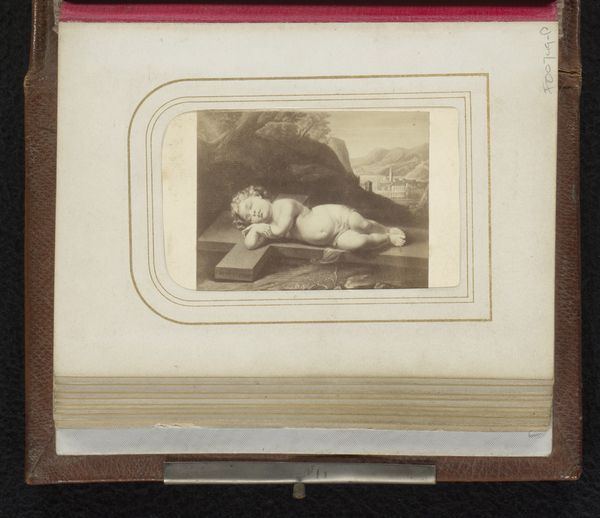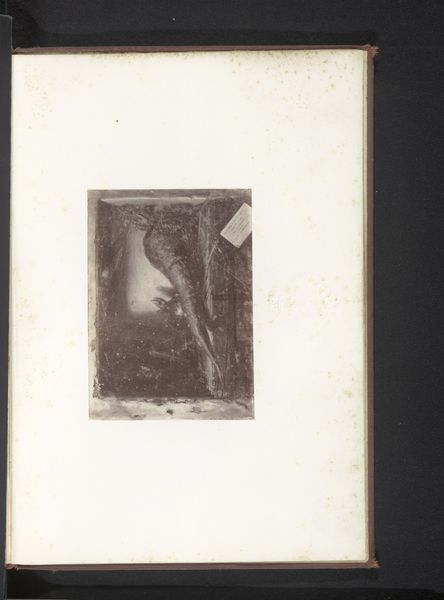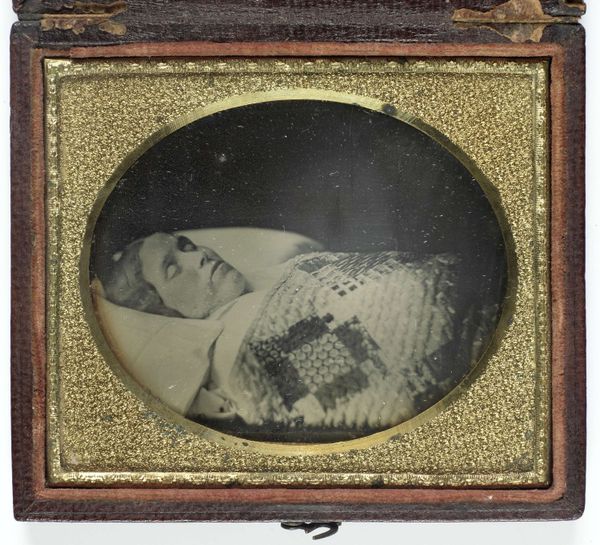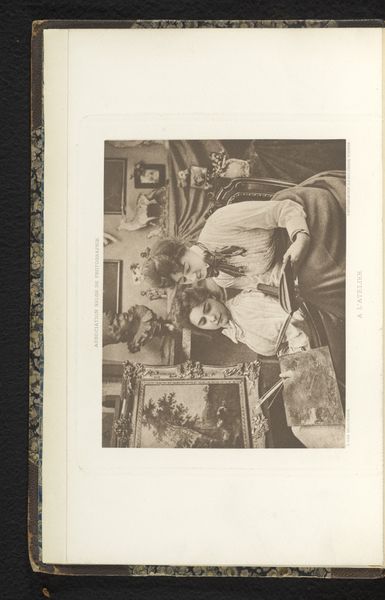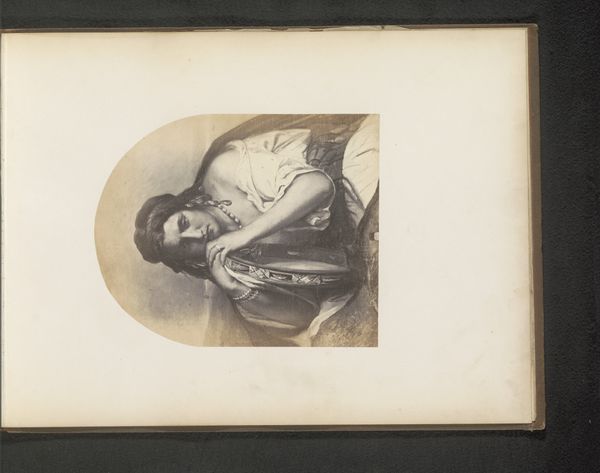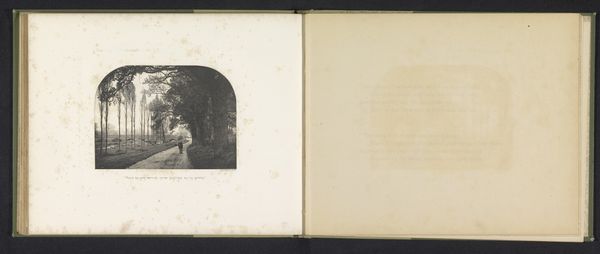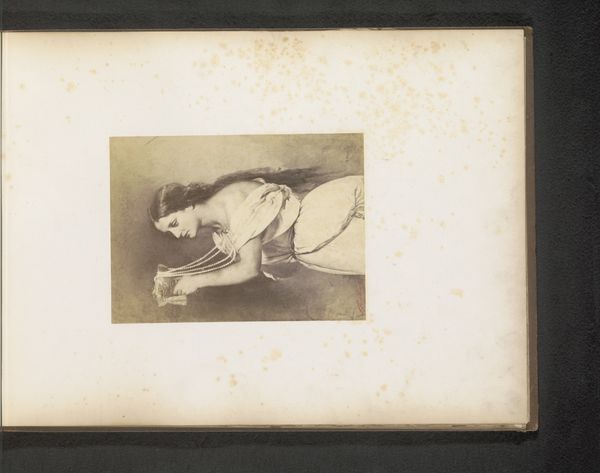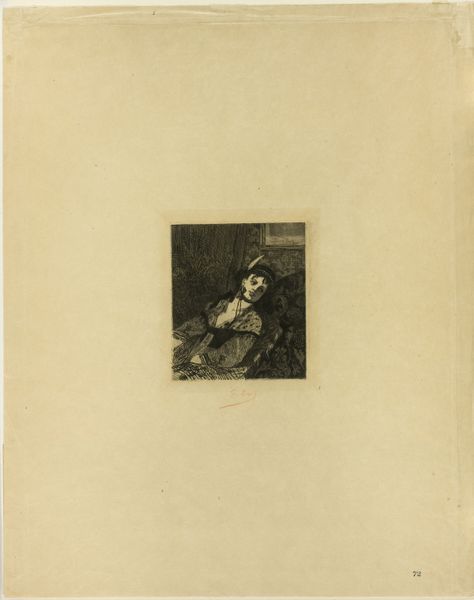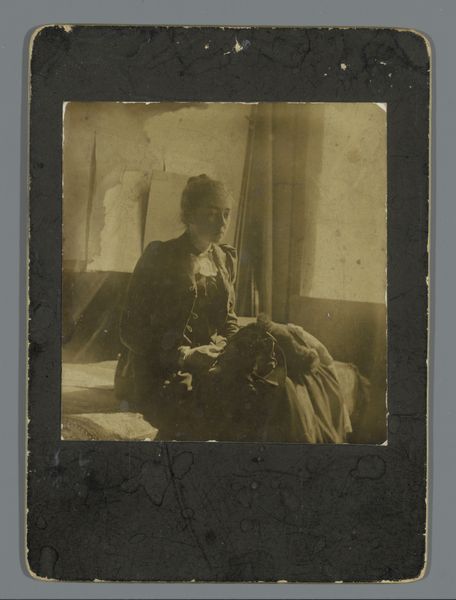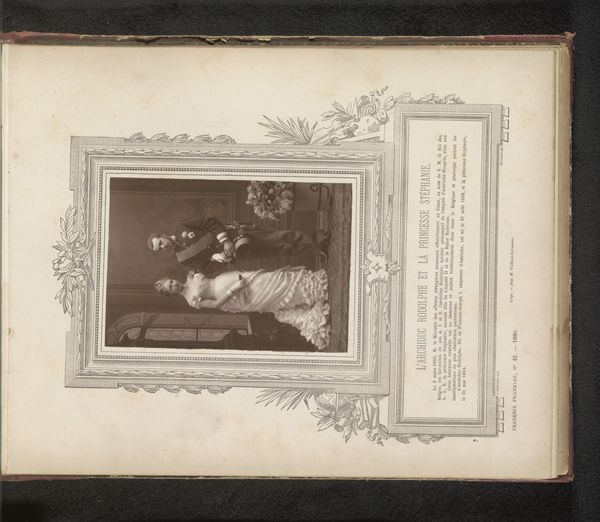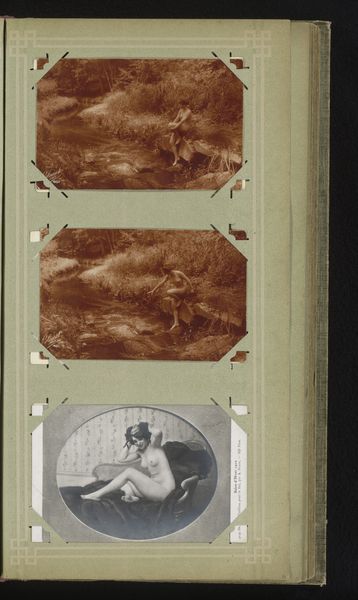
photography, albumen-print
#
portrait
#
aged paper
#
toned paper
#
muted colour palette
#
worn
#
photography
#
underpainting
#
genre-painting
#
albumen-print
Dimensions: height 104 mm, width 65 mm
Copyright: Rijks Museum: Open Domain
Editor: Here we have an albumen print entitled "Portret van een baby," or "Portrait of a Baby," created sometime between 1880 and 1910 by Emil Vogt. It feels incredibly intimate. I am struck by the aged paper and muted tones. How do you read into it? Curator: The choice of albumen print itself is significant. Consider the labour involved in its production: the preparation of the glass plate negative, the coating of the paper with egg white, the meticulous printing process. This wasn't mass production; each print held a unique value determined by time and skill. Editor: That's interesting. I hadn’t thought about the technique itself adding meaning. Curator: And how does the subject matter tie into this production? A portrait of a baby speaks volumes about bourgeois values during the late 19th century. The very act of commissioning such a photograph highlights a specific cultural importance being placed on the individual and the family. Who was consuming such sentimental objects, and why? Editor: So, beyond just being a picture of a baby, it’s reflecting broader trends in society? Curator: Exactly. The worn nature of the image also suggests it was often handled and revisited. Considering the social rituals around portraiture and memory during this period helps reveal that photographs were important material possessions invested with considerable symbolic meaning. This particular photograph represents more than simple cuteness; its context reflects prevailing class dynamics and technological change. Editor: I see how deeply the choice of material and production method influenced the meaning, connecting back to consumerism of the period. Curator: Indeed, by examining the “how” as well as the “what,” we get a far richer understanding.
Comments
No comments
Be the first to comment and join the conversation on the ultimate creative platform.

